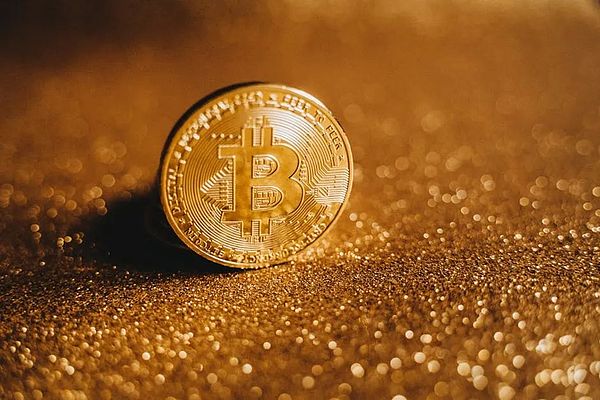Text/Beijing Business Daily reporter Liu Sihong
Under multiple favorable factors, Bitcoin is on the rise again, and its price continues to hit a record high. Beijing time, May 22, the reporter noticed that Bitcoin rose by more than 2.93% in 24 hours, from 106,500 US dollars to 108,500 US dollars, 109,800 US dollars, until it broke through the 110,000 US dollars mark, and rose to a high of 111,800 US dollars, setting a new historical high. As of 17:15 when publishing the article on the same day, the latest price of Bitcoin was 110,400 US dollars, with a 24-hour increase of 3.64% and a monthly increase of 29.6%. In addition, the latest price of Ethereum is $2,675, up 5.65% in 24 hours and 68.34% in the month. The industry believes that the United States is accelerating the legislation of stablecoin supervision and adding stricter anti-money laundering regulations and consumer protection measures. In addition, more and more companies are using Bitcoin as a reserve asset, which has also driven up the price of Bitcoin.
As Yu Jianing, co-chairman of the Blockchain Committee of the China Communications Industry Association and honorary chairman of the Hong Kong Blockchain Association, pointed out, the current round of Bitcoin price climbing to a record high, breaking through the 110,000 US dollar mark, is not driven by the occasional short-term market sentiment, but the result of multiple macro, policy and structural factors.
On the one hand, the stable currency regulatory signals released by the policy side played an extremely critical role. Yu Jianing believes that the advancement of the GENIUS Stablecoin Act provides an institutional channel for compliant funds to enter the digital asset market, and the simultaneous and moderate regulatory statements of the U.S. Securities and Exchange Commission and the Treasury Department have built a relatively clear policy expectation boundary, which has brought positive feedback to the risk assessment of the capital market. This progress in institutional support has greatly enhanced the market's confidence in the entry of long-term funds and built an upward foundation for price trends. On the other hand, the performance at the market level also shows the characteristics of institutional funds dominance, increased activity in the derivatives market, and a significant increase in the proportion of leverage participation. Yu Jianing told the Beijing Business Daily that the game structure of the market in extreme market conditions is shifting from retail investors to heavy capital traders. This change in capital structure, on the one hand, provides a stronger trend momentum for Bitcoin prices, but on the other hand, it also increases the intensity of potential market fluctuations, especially when prices are close to integer psychological barriers and position concentration increases. The fierce game between long and short forces and the linkage between options and spot make the market trend more sensitive between breakthroughs and callbacks. The deeper driving force comes from the repricing process of Bitcoin's asset status in the global asset system. In the future, Bitcoin's volatility will no longer be just the result of market speculation, but a deeper part of the global capital structure adjustment and policy power game.
However, amid the price frenzy, margin calls continued. According to Coinglass data, due to the surge on May 22, in the past 24 hours, a total of 106,369 people worldwide had their positions liquidated . leaf="">The total amount of liquidation is 405 millionUS dollars. As of 15:08 on the same day, 121,185 people worldwide were still liquidated, with the total amount of liquidations reaching 494 million US dollars. Yu Jianing believes that the current market structure shows obvious leverage-driven characteristics, and the number of high-leverage positions on the platform has increased sharply, which has significantly increased the sensitivity of price movements to volatility. Once the market encounters liquidity withdrawal, regulatory expectations shift, or news disturbances, it is very easy to trigger a chain explosion mechanism, resulting in a waterfall-like decline. This state of excessive local leverage concentration means that although the market can rise rapidly in the short term, its ability to resist shocks has been significantly reduced.

In addition, Yu Jianing said thatthe market's optimistic expectations are highly consistent, which also constitutes a hotbed of reflexive risks. From the president's statement to many well-known investors' optimistic expectations, Bitcoin prices are being involved in a narrative structure driven by policy signals, social media sentiment and capital games. In traditional financial markets, this excessive consensus often indicates the approach of a stage top, especially when valuations are separated from on-chain data support and capital structure deviates from the basis of real demand, the speed and magnitude of market reversals are often unexpected. In the absence of more basic indicators such as exchange position distribution and on-chain transfer paths, there is an obvious imbalance in relying solely on price trends to judge the trend direction.
"From a cyclical perspective, the current market is no longer a low-risk initial entry range, but a high-volatility, high-leverage, high-emotion density game stage." Talking about the risks behind Bitcoin, Yu Jianing pointed out that the key to the later trend is not whether it breaks through new highs, but whether it can build a stable transaction concentration zone and an effective price support layer, which determines whether the market can transition from a high-rising state to a continuous trend.
At the current stage, it is necessary to focus more on risk control rather than emotional pursuit. For investors, it is important to keep in mind that virtual assets are high-risk investment assets. The fluctuation range and speed of asset prices are significantly different from those of traditional assets, and the equity mechanism and technical support behind them are significantly different from traditional investment assets. Before participating in the virtual asset market, you must clearly understand the intrinsic value of the relevant virtual assets in order to essentially control the investment risks.
 Catherine
Catherine





